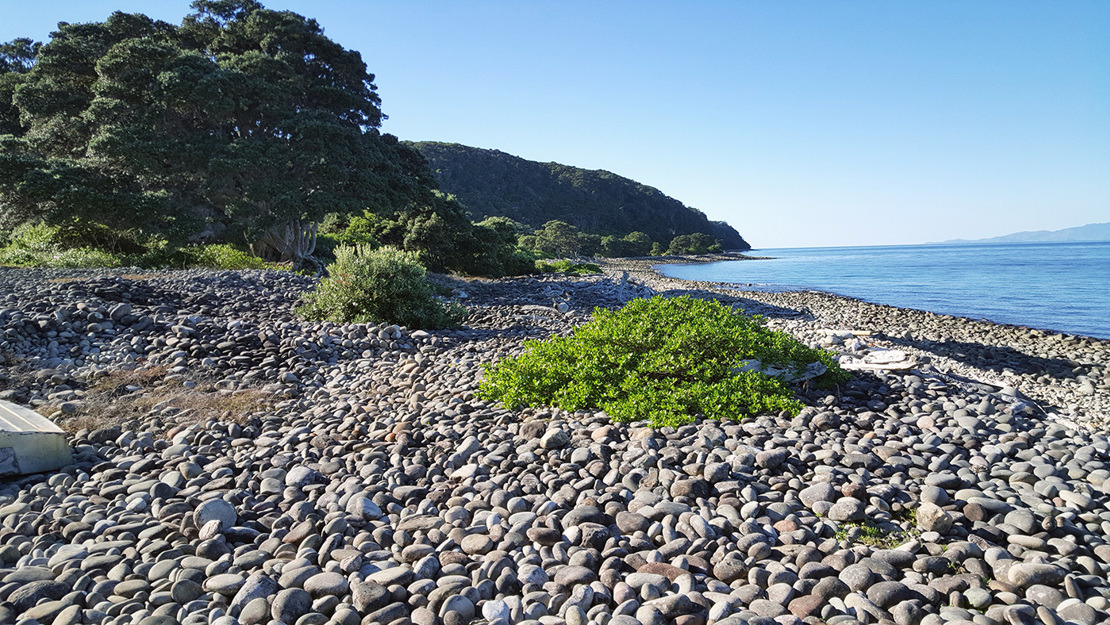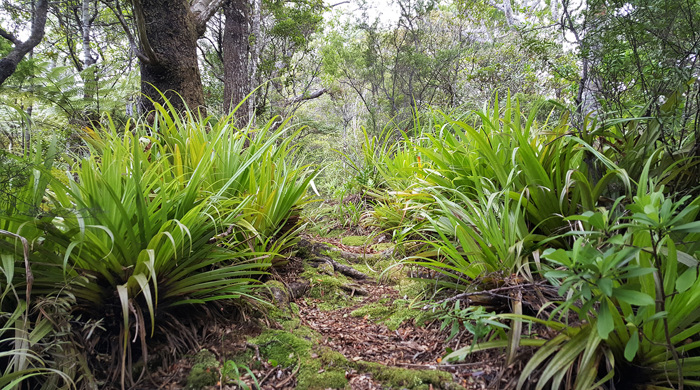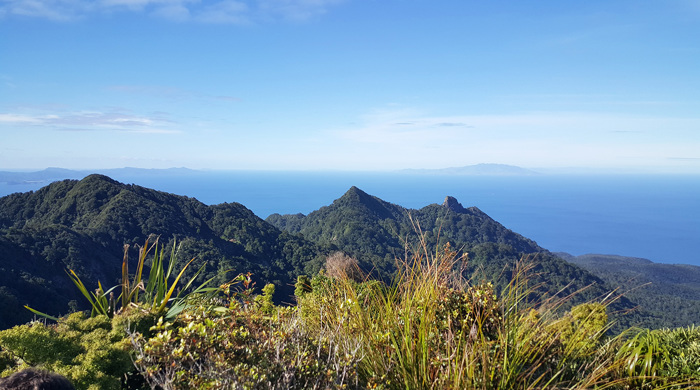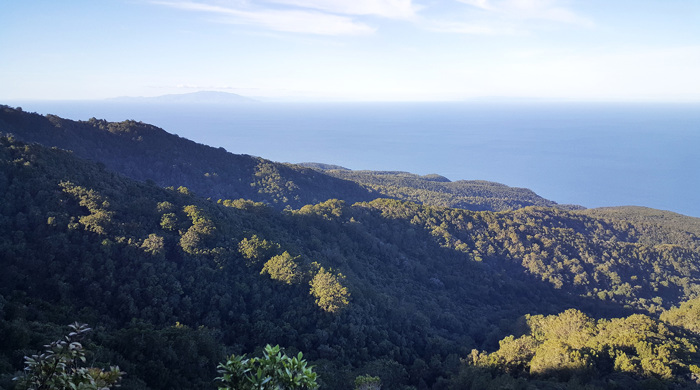Te Hauturu-o-Toi / Little Barrier Island
Size: 3070 hectares
Area description
Te Hauturu-o-Toi / Little Barrier Island lies at the northern end of the Hauraki Gulf between Aotea / Great Barrier Island and Leigh on the mainland. This is Aotearoa / New Zealand’s largest island nature reserve north of the subantarctic islands.
The forest-clad Te Hauturu-o-Toi was originally formed by a large volcano. It rises steeply from sea cliffs up to 250 metres high to the highest point at 722 metres above sea level.

Key ecosystems
Te Hauturu-o-Toi is considered to be one of the most important nature reserves in the world. It is possibly Aotearoa / New Zealand’s most intact, undisturbed ecosystem. The island supports the country's most diverse native bird and reptile communities.
There is a diverse range of ecosystems on the island including:
- boulder beaches on the shoreline (SA4)
- steep coastal cliffs and coastal forest (CL1 and WF4)
- regenerating scrub and forest on the hillslopes (VS2 and VS3)
- a number of forest types including kauri, podocarp, broadleaved, beech forest (WF12).
The island supports one of only two examples of kauri, tōwai, rātā, montane podocarp forest (MF25) in Auckland. The other is on the high peaks of Aotea / Great Barrier Island.

Key species values
There are populations of many threatened species on the island including:
- tuatara
- wētāpunga
- both species of pekapeka (native bat)
- native birds and plants no longer found on the mainland.
For seabirds, Te Hauturu-o-Toi is extremely important. It is currently the only known breeding site for the New Zealand storm petrel. Approximately 98 per cent of Cook’s petrel nest on the island. There is a small but significant number of takoketai (black petrel) also nesting there along with:
- kororā (little penguin)
- ōi (grey-faced petrel)
- kuaka (diving petrel)
- pakahā (fluttering shearwaters).
Te Hauturu-o-Toi is the only place that hihi (stitchbird) are able to survive without human assistance. It also provides a vitally important refuge for a number of other threatened native species introduced to the island including:
- kākāpō
- kōkako
- tīeke (North Island saddleback).

Conservation management
Te Hauturu-o-Toi was less impacted by animal pests than other parts of Aotearoa / New Zealand, with only cats and kiore (Pacific rat) establishing. These were eradicated from the island by 1981 and 2006 respectively. Native species populations continue to recover following these eradications.
Biosecurity protocols are essential for preventing new pests from arriving. This includes ongoing vigilance to avoid further unwanted weed species from establishing.
Te Hauturu-o-Toi was inhabited by Ngāti Manuhiri, Ngāti Rehua and Ngāti Wai until the island became Aotearoa / New Zealand’s first nature reserve in 1895. In 2012, Ngāti Manuhiri were formally recognised as kaitiaki or guardians of Te Hauturu-o-Toi in a Treaty of Waitangi settlement. Ngati Manuhiri gifted the island to the people of Aotearoa / New Zealand and now co-govern the reserve with the Department of Conservation.
The Department of Conservation strictly regulates visitor numbers and movements to protect the island's biodiversity.




